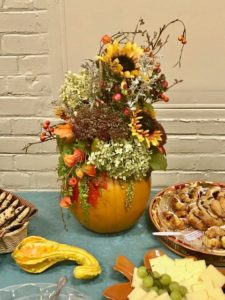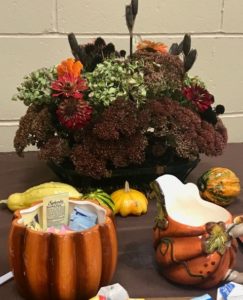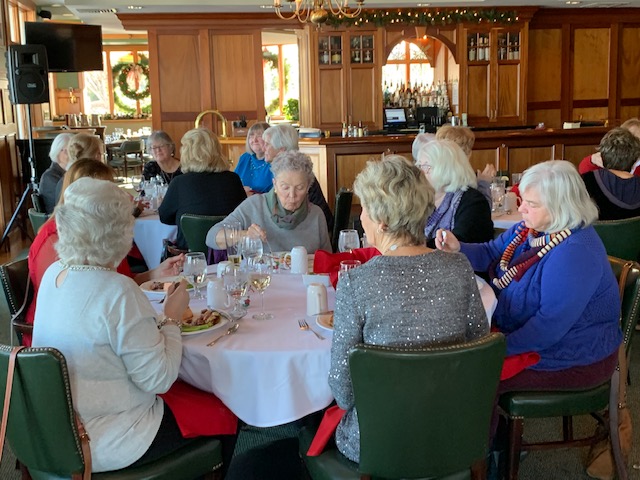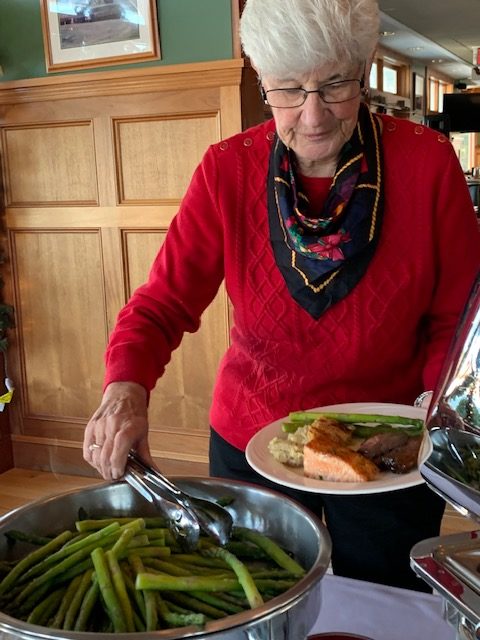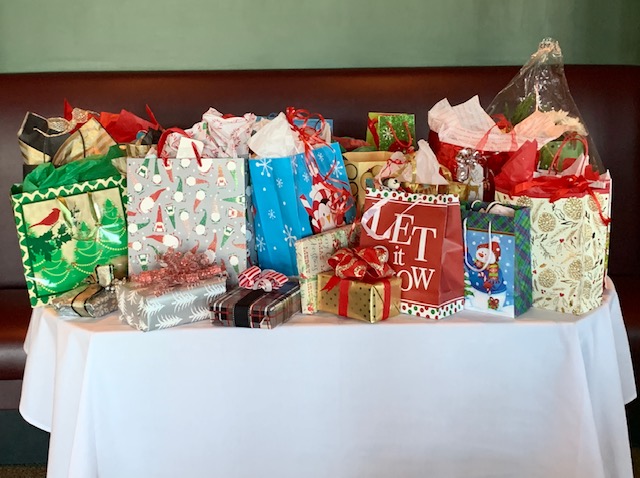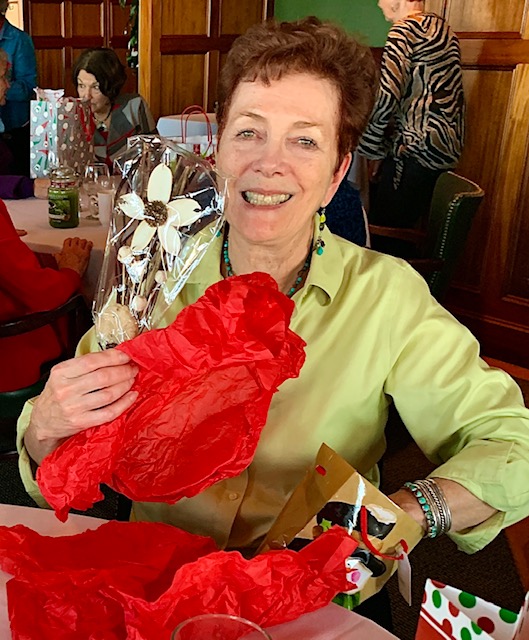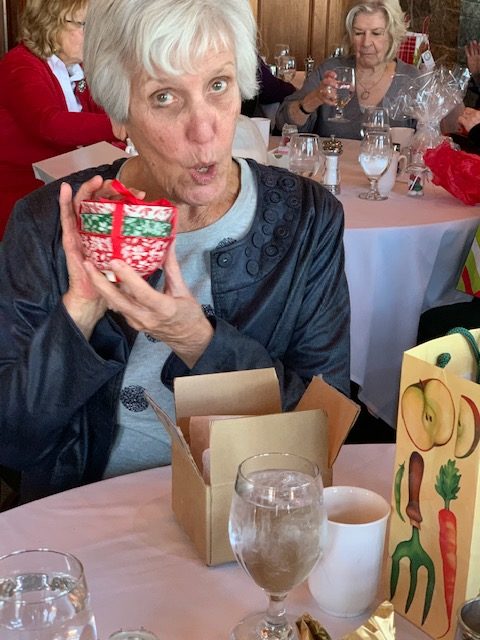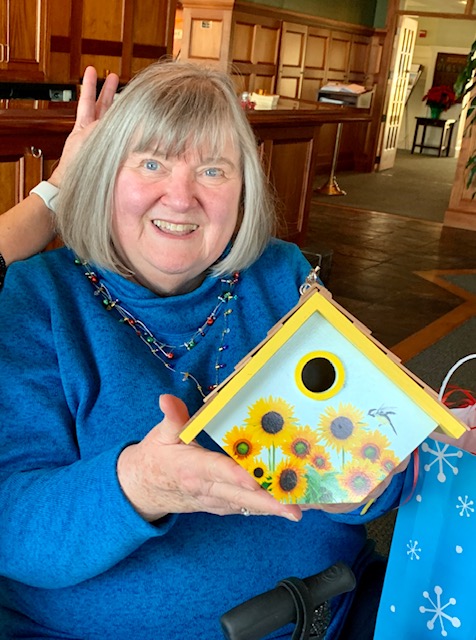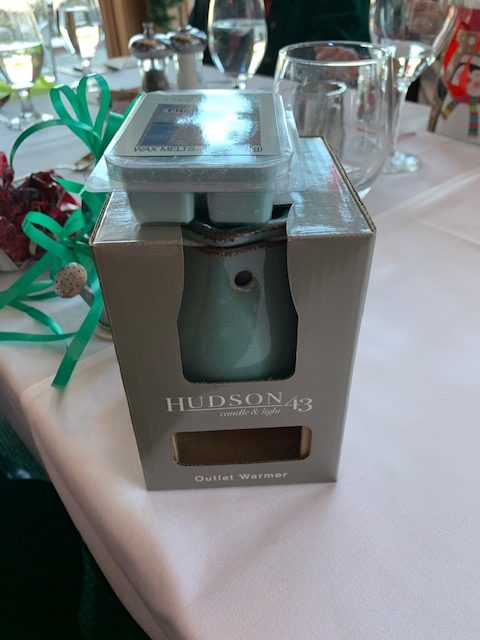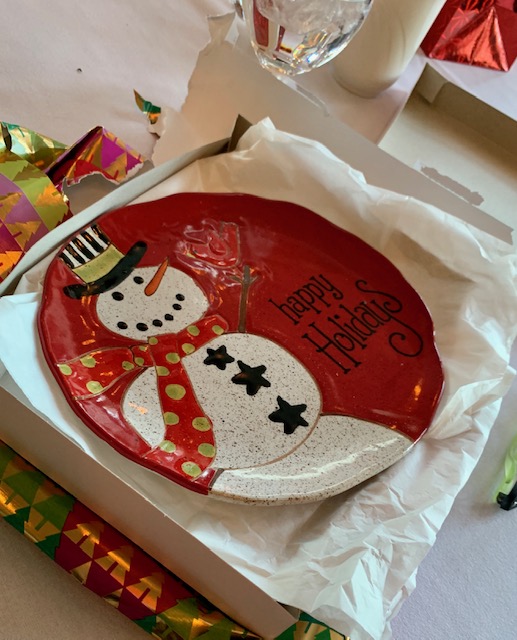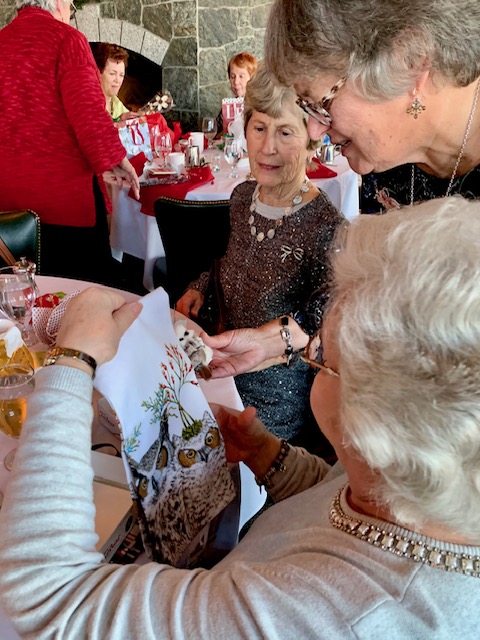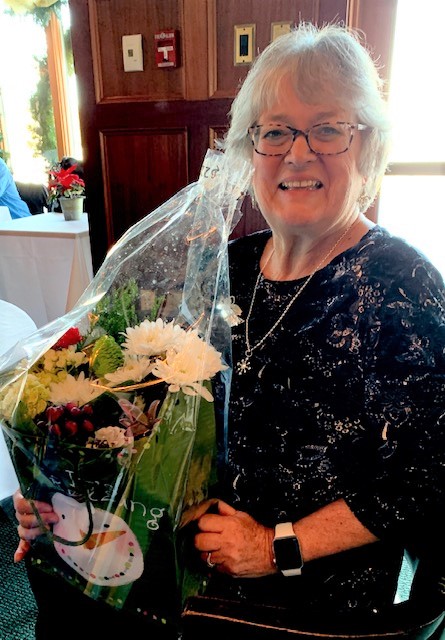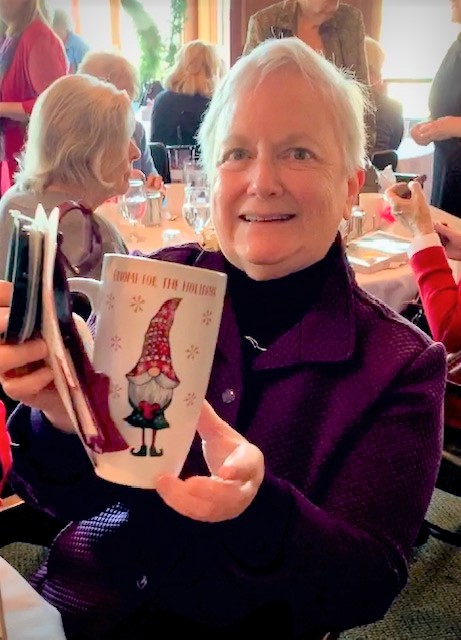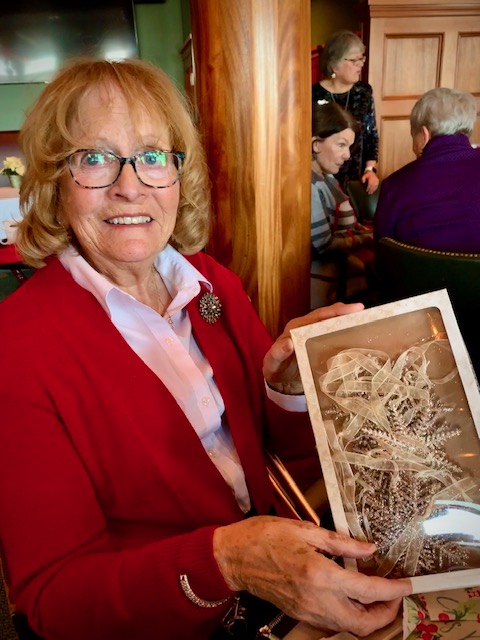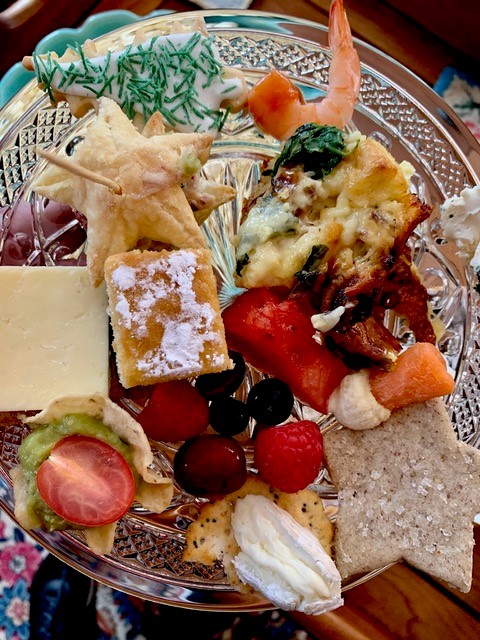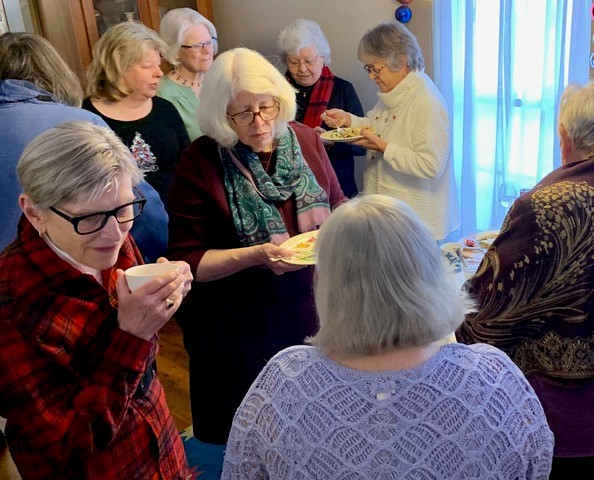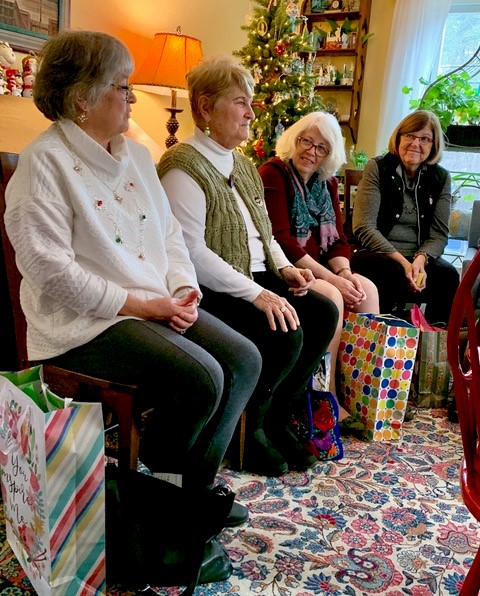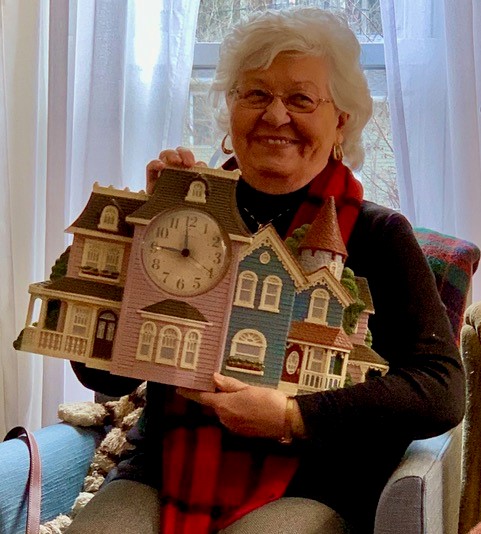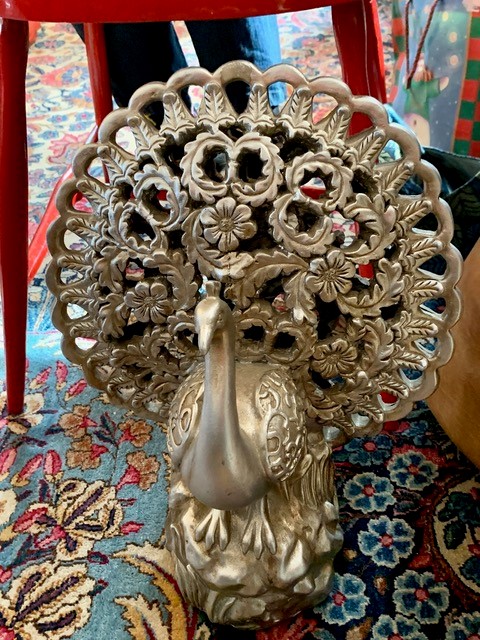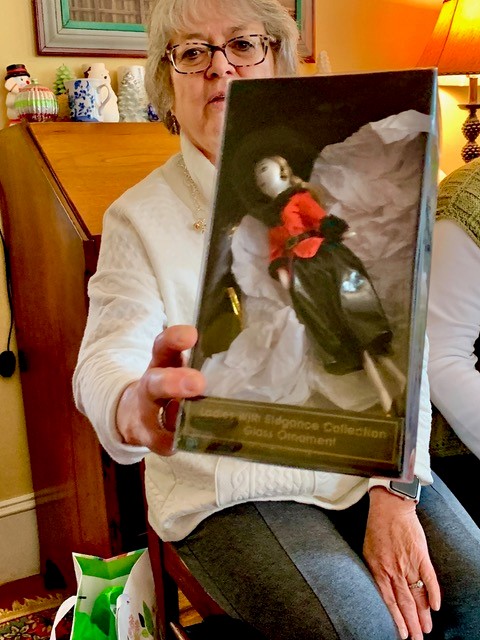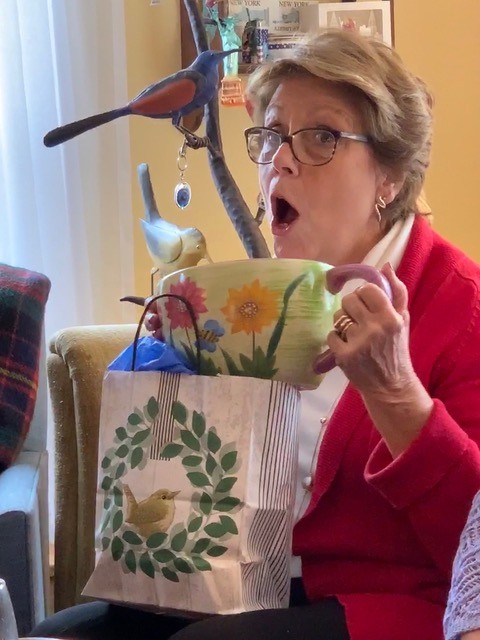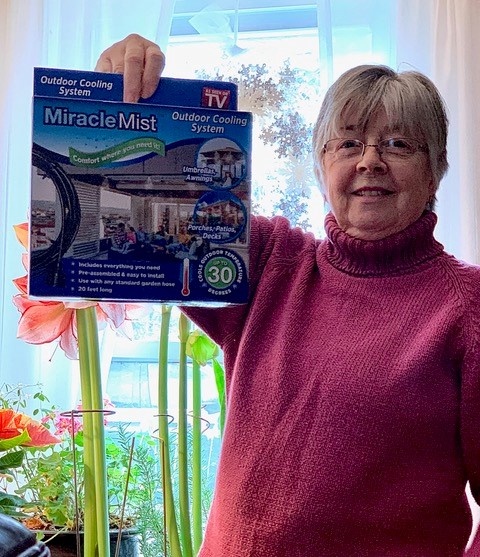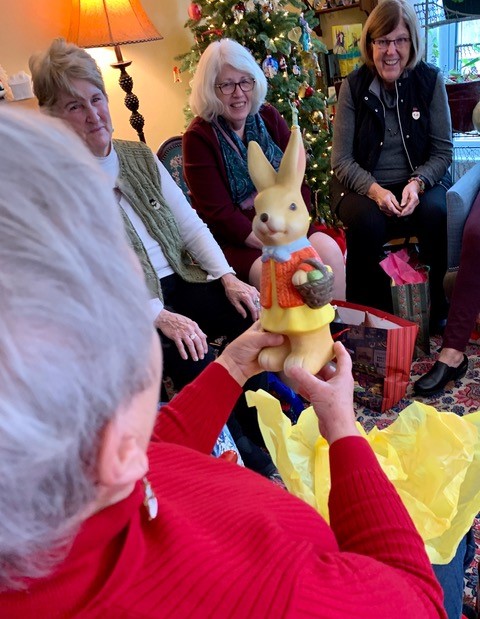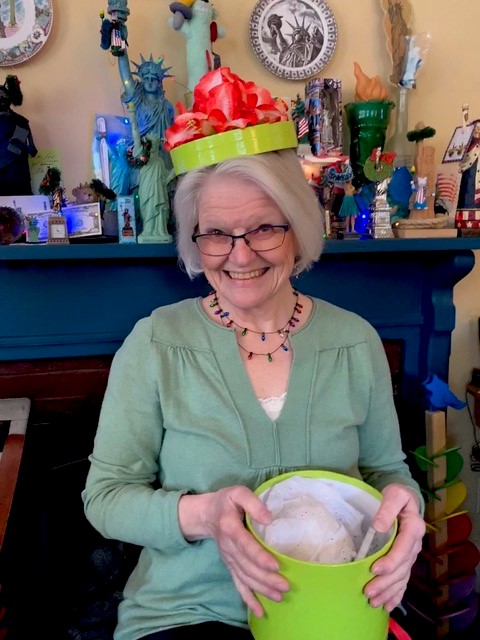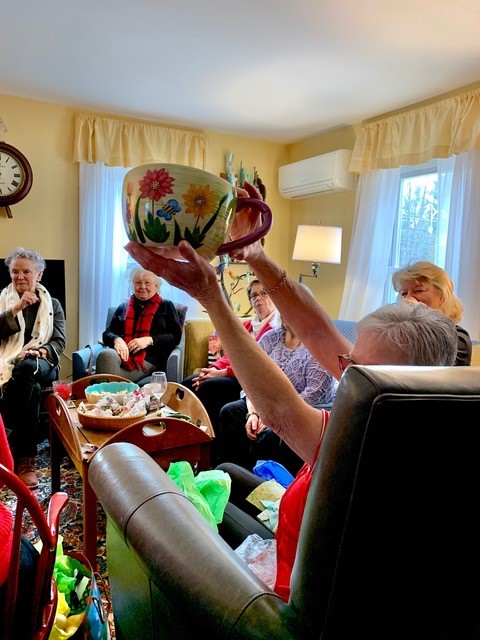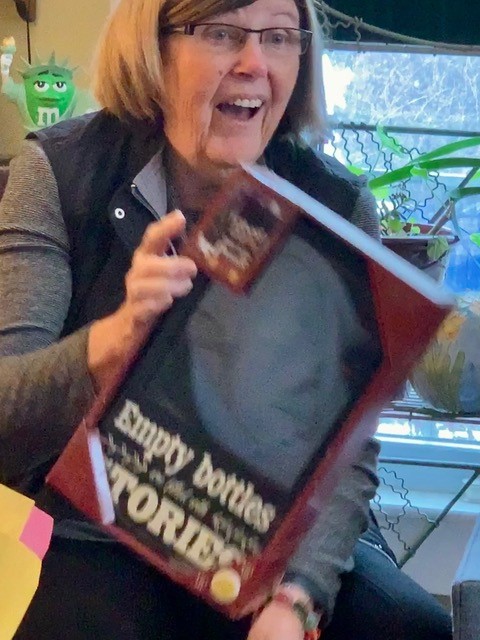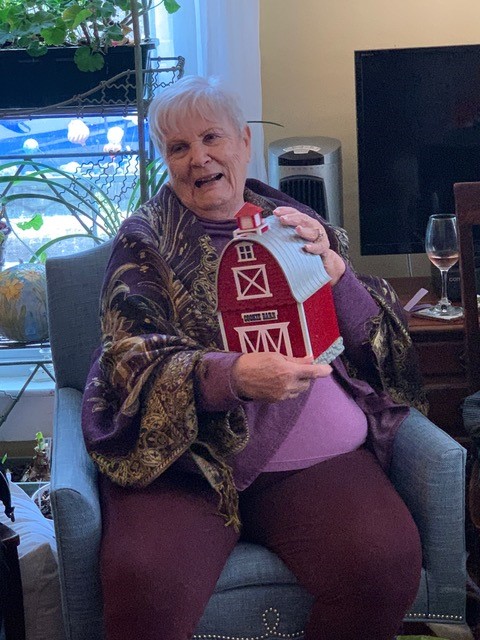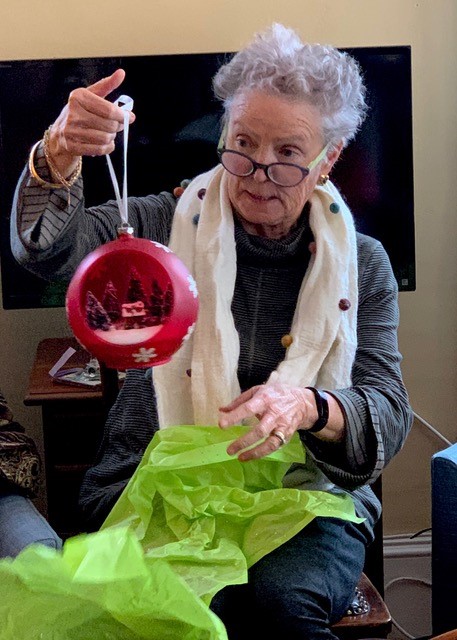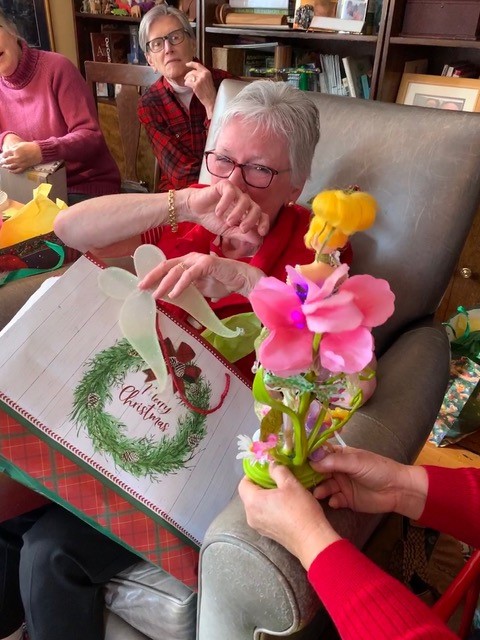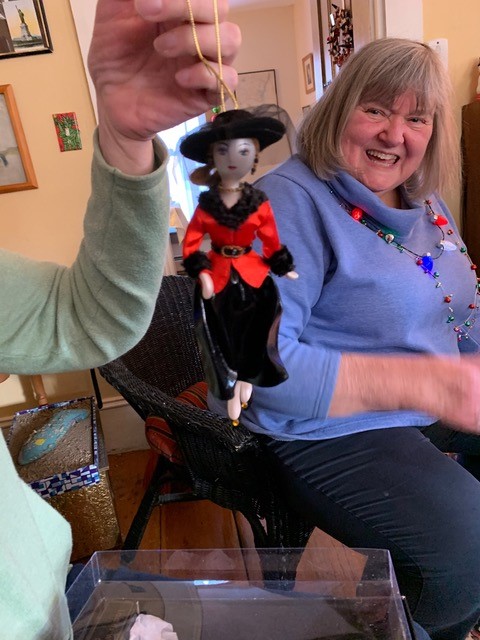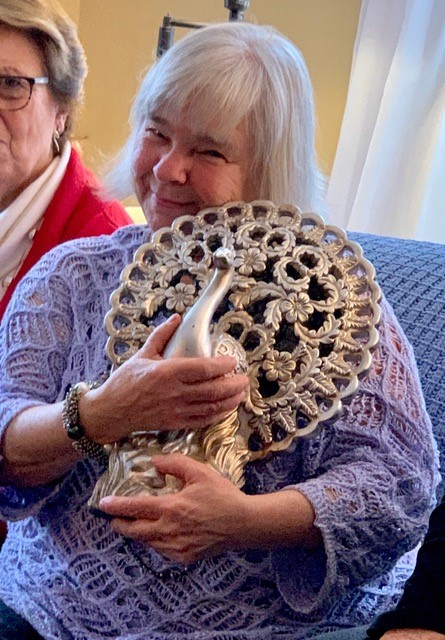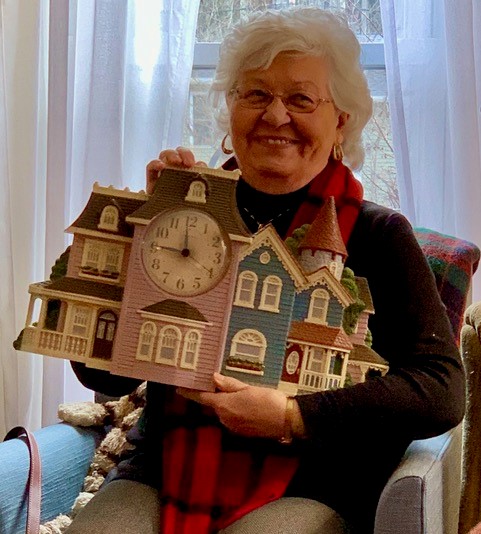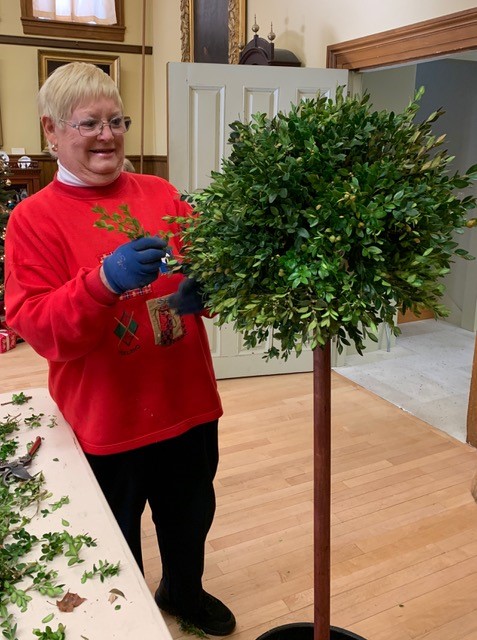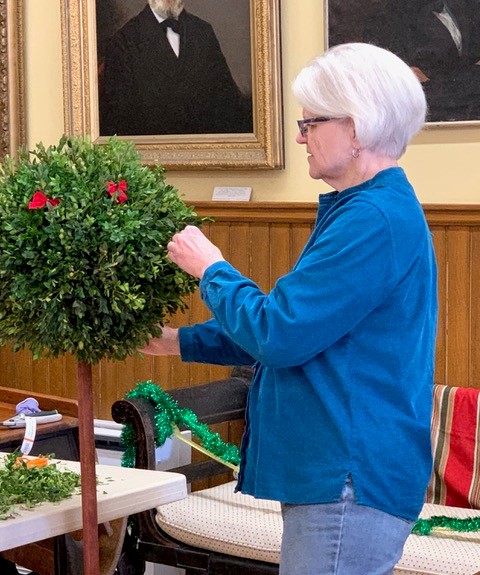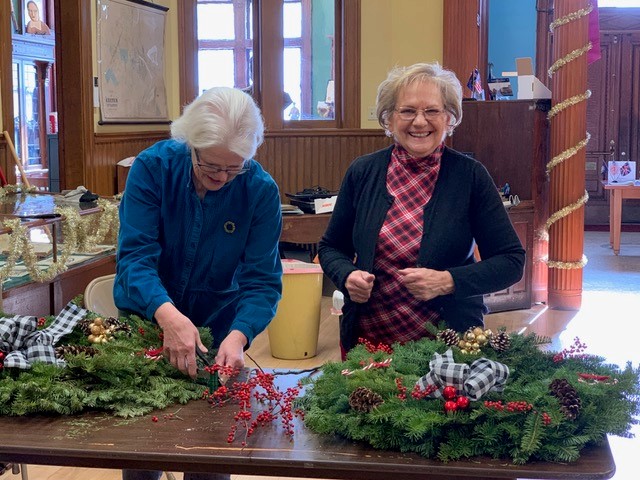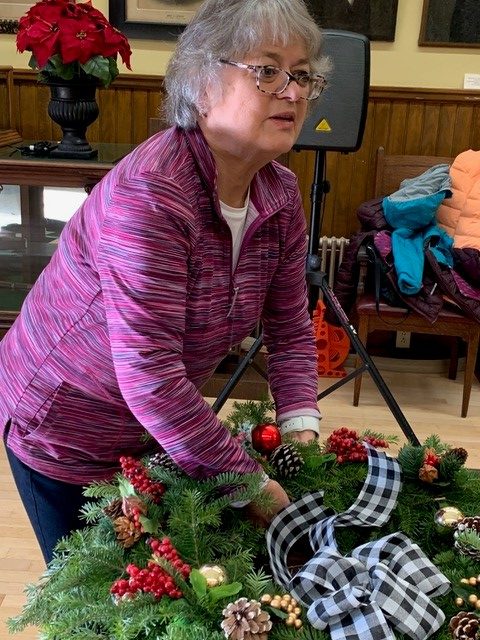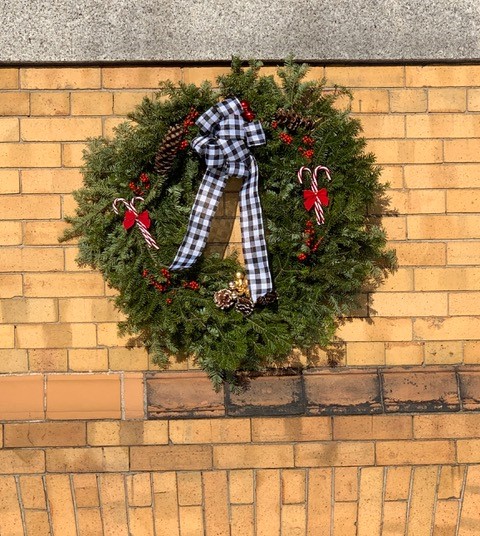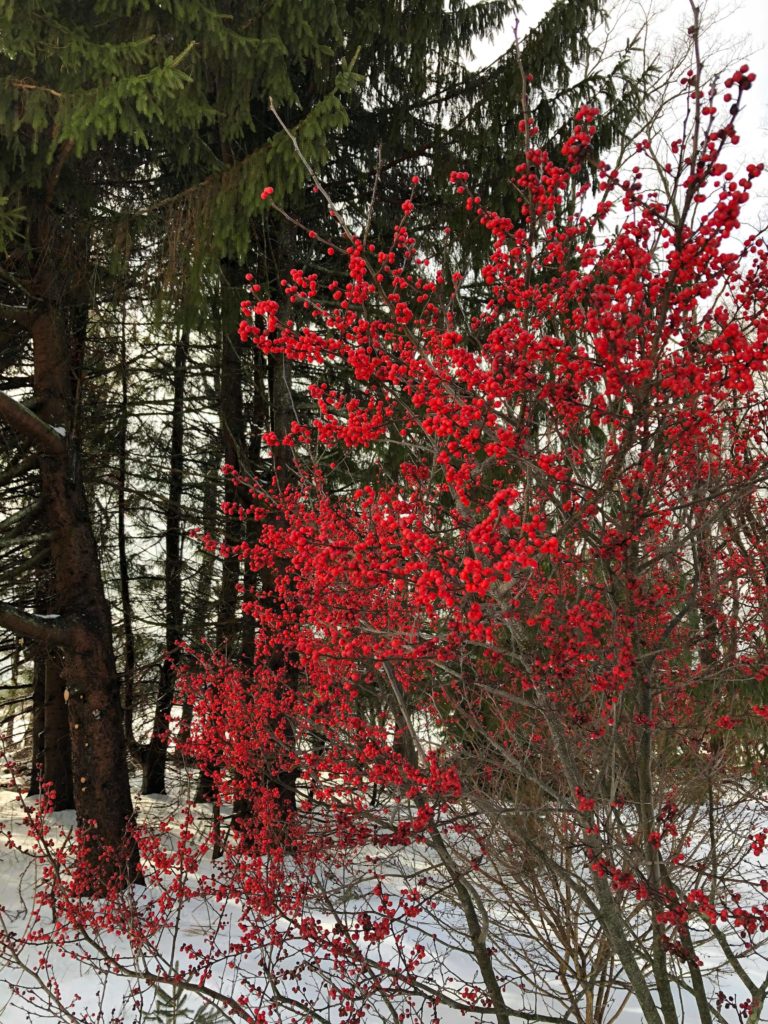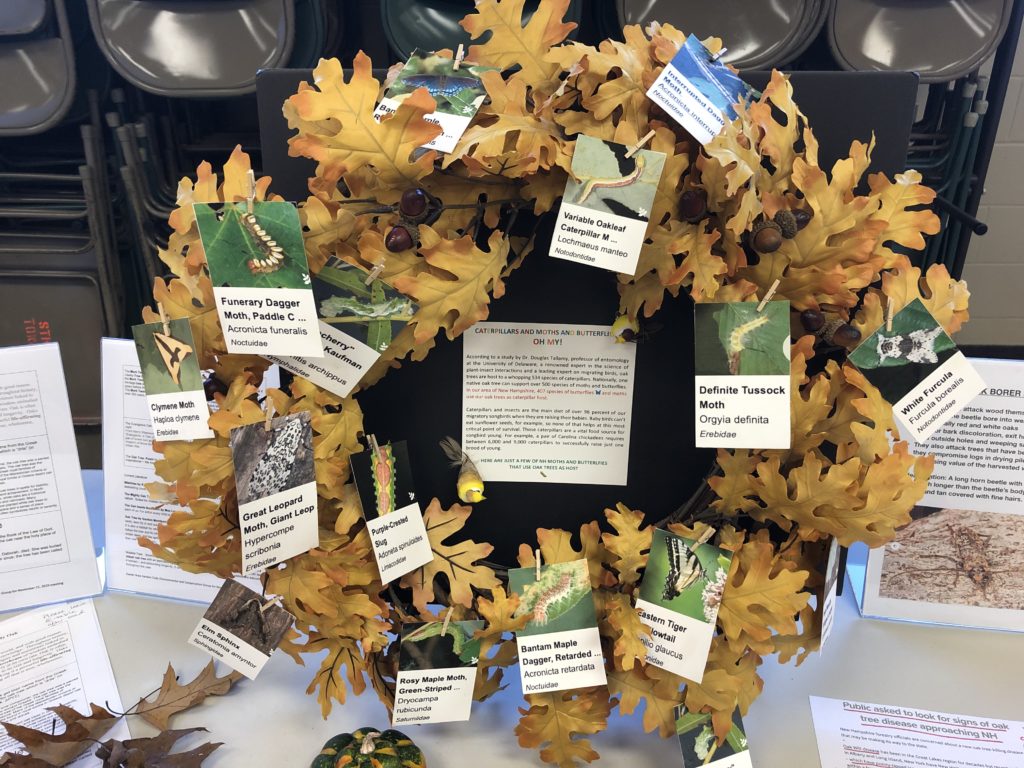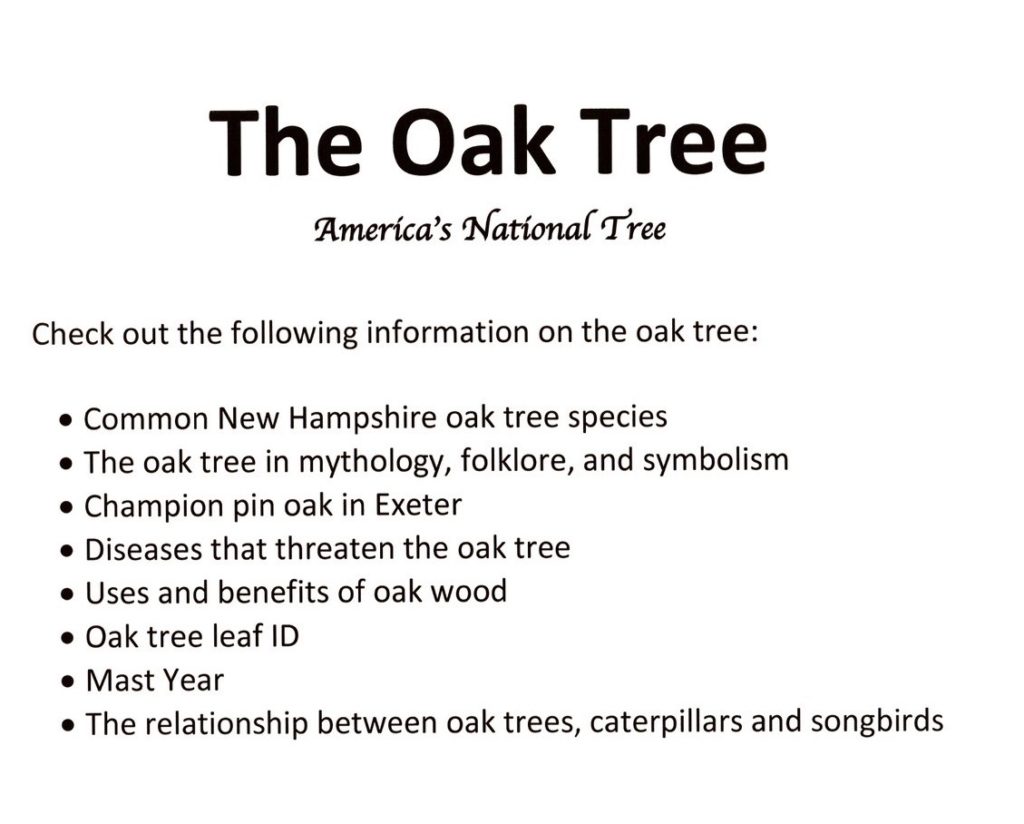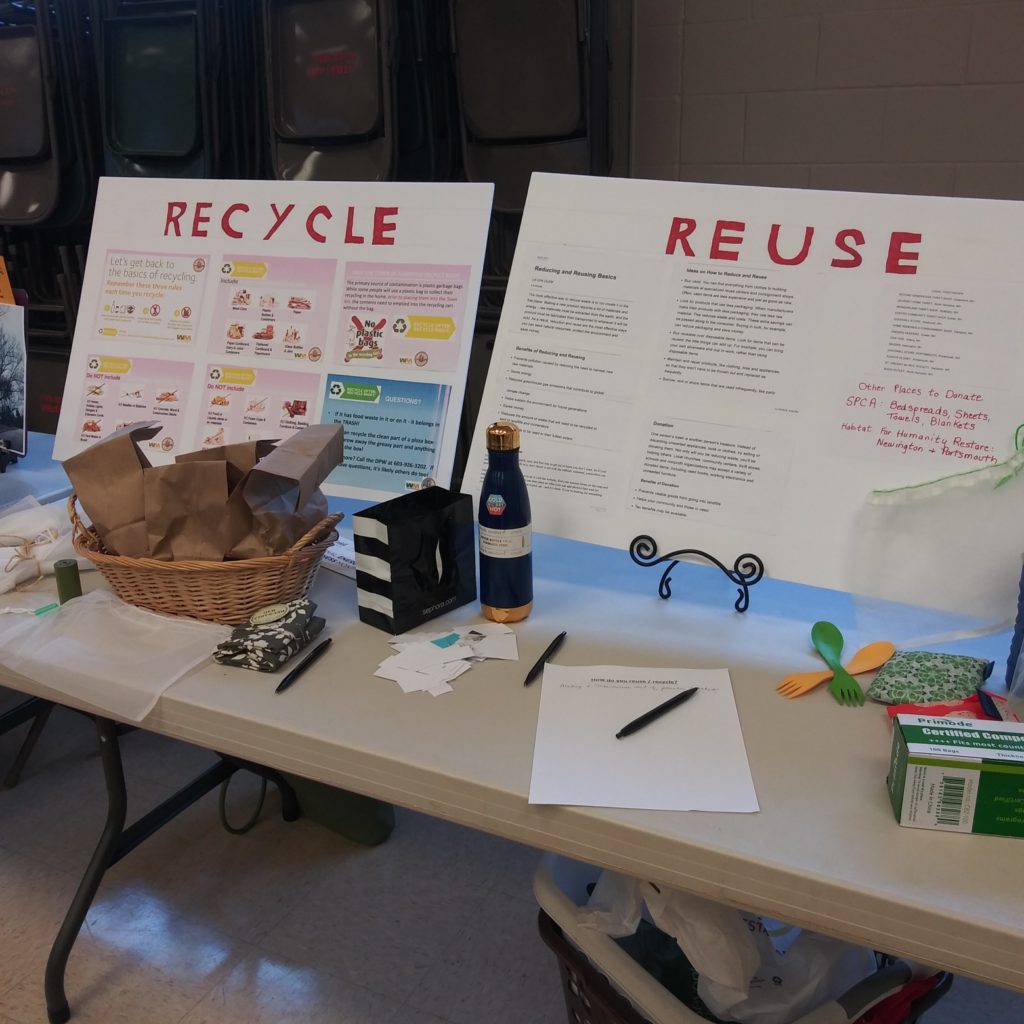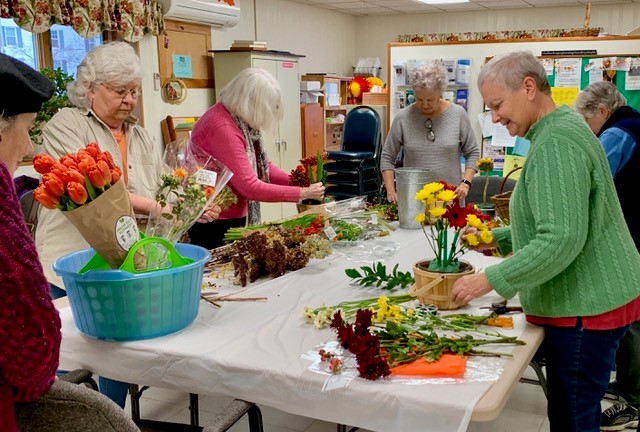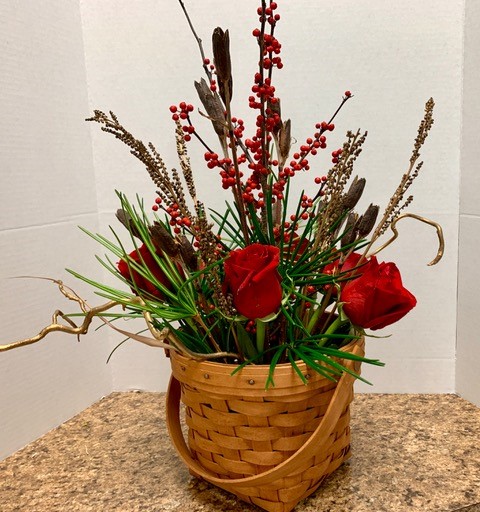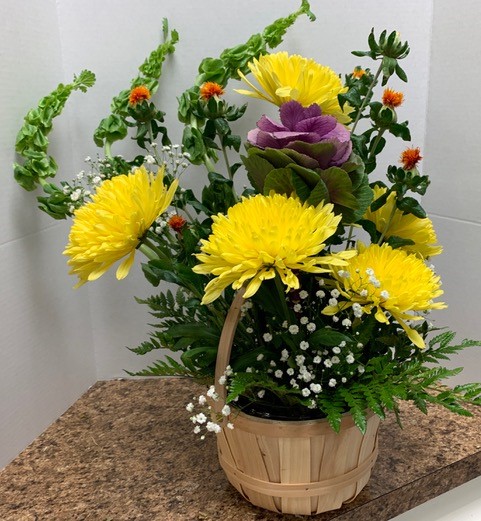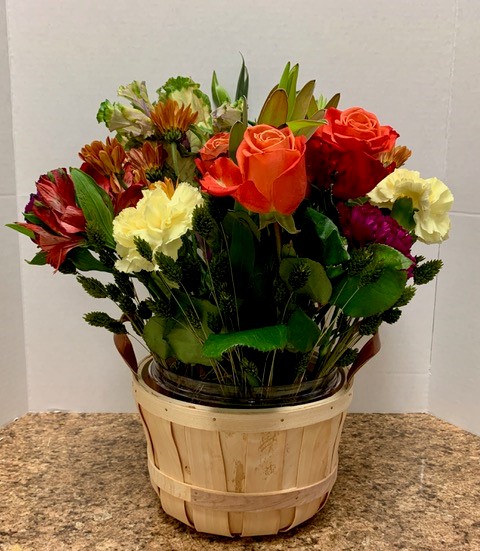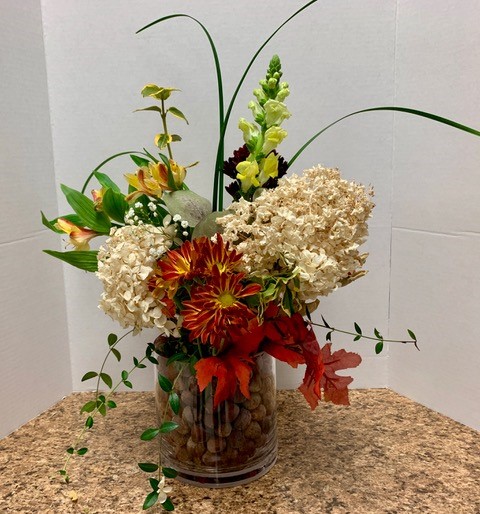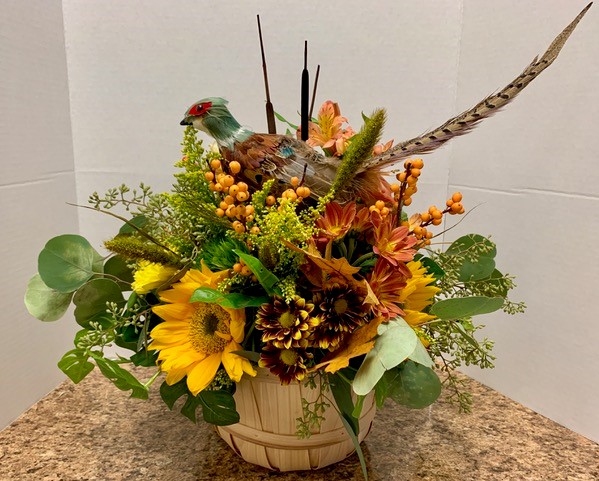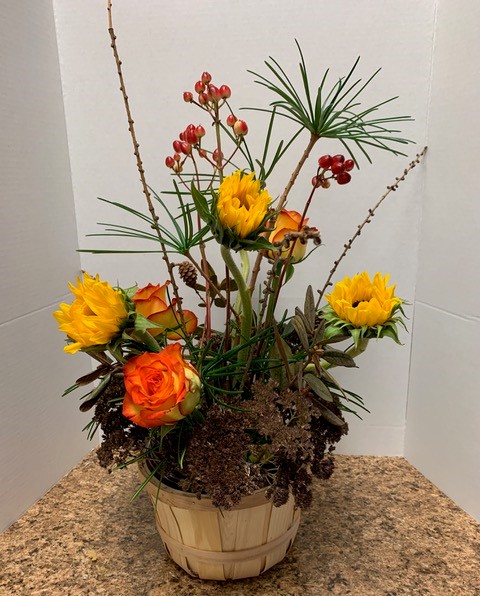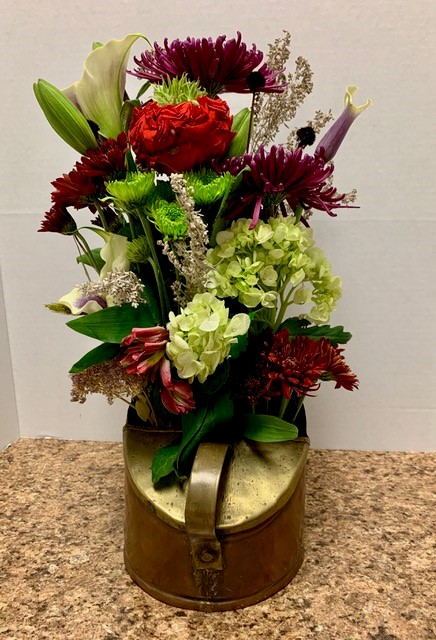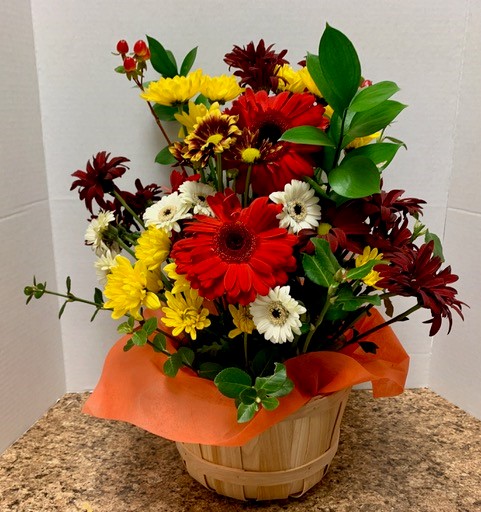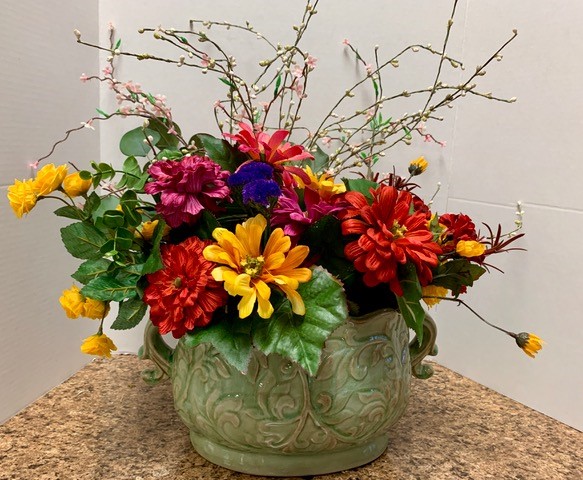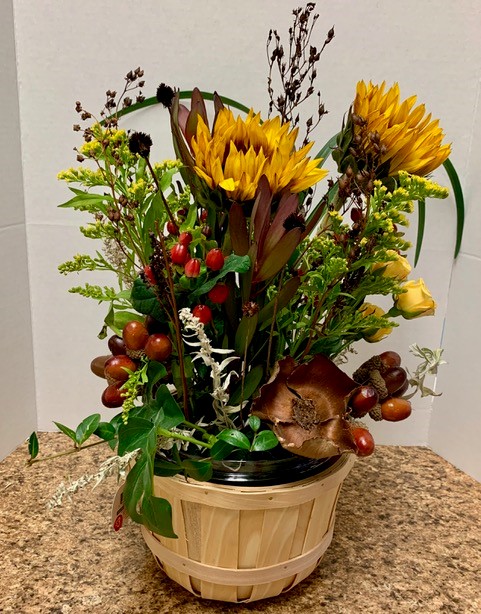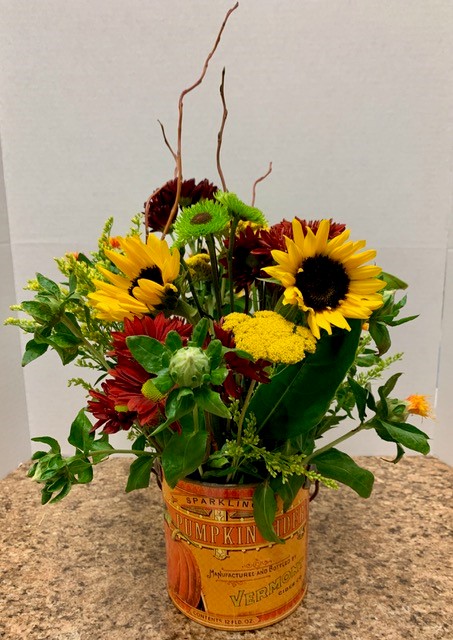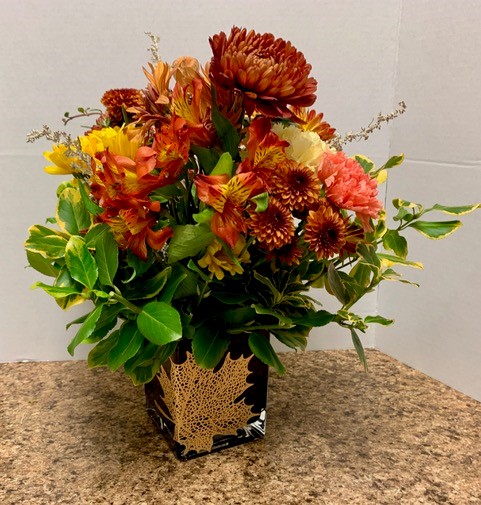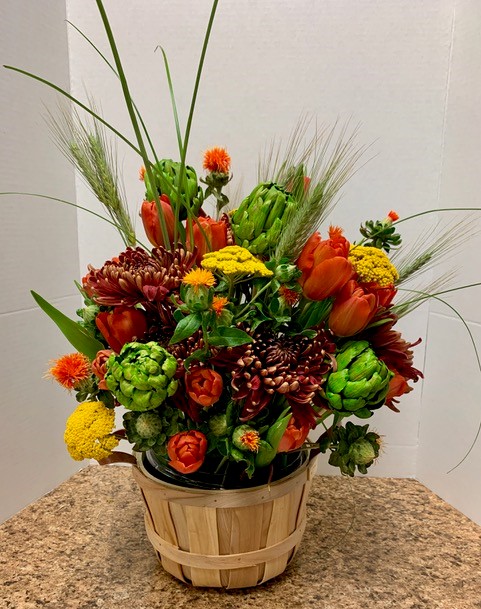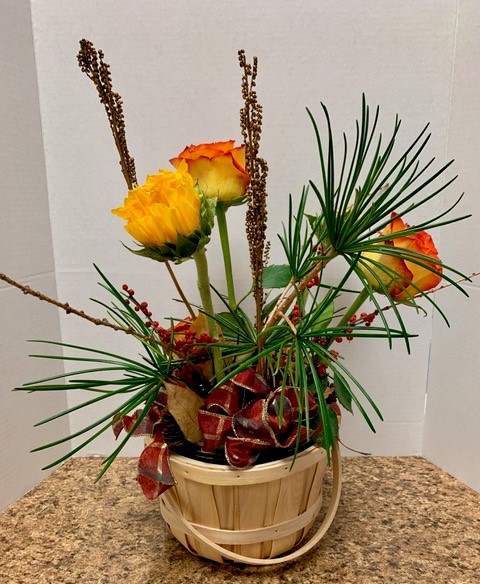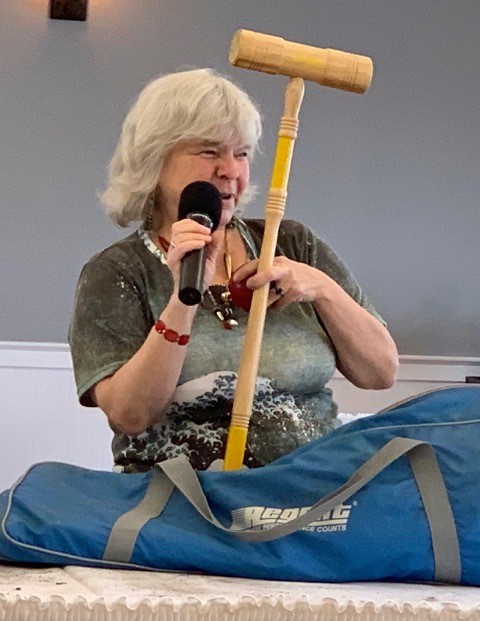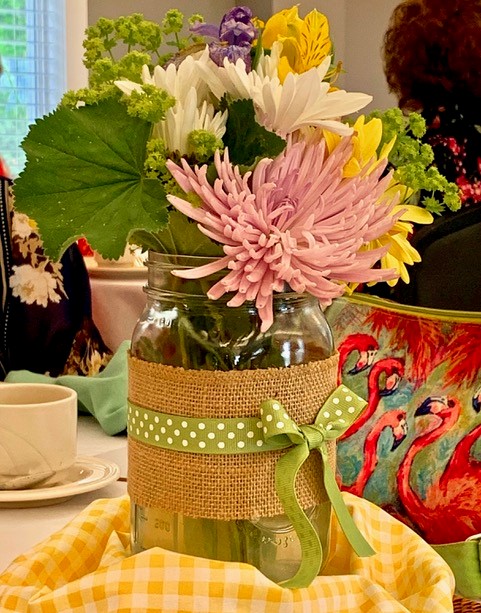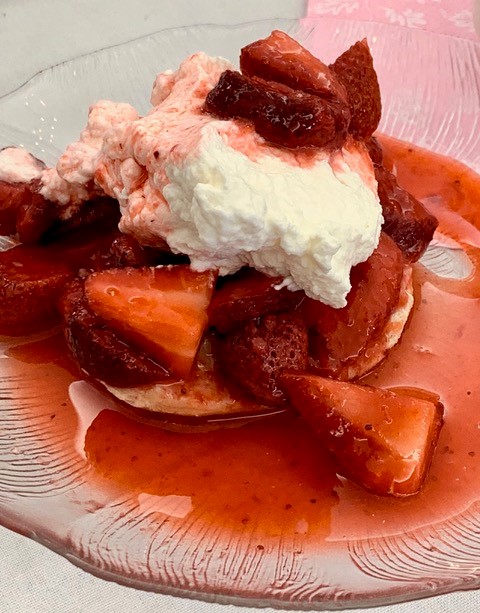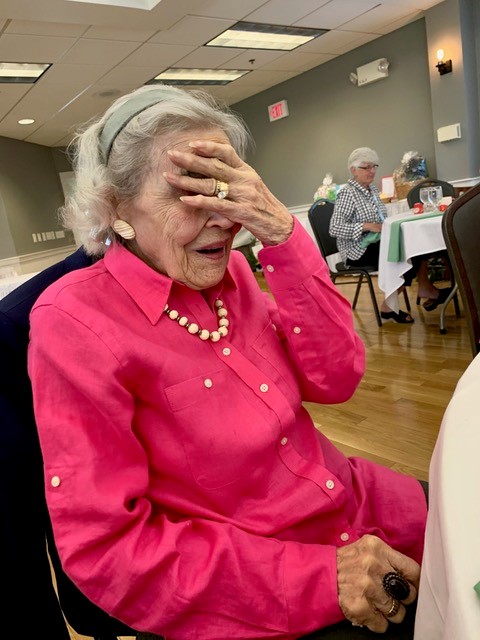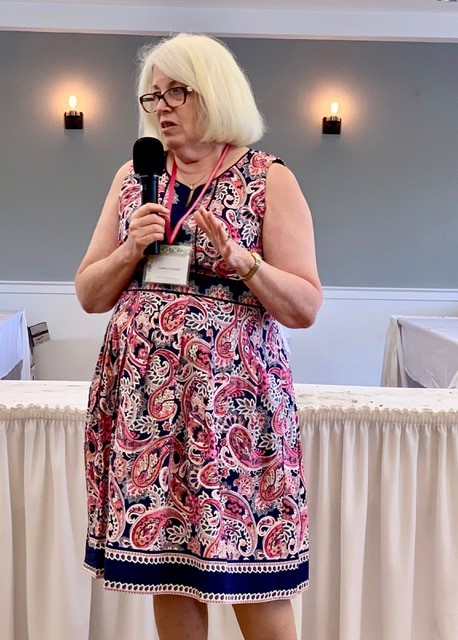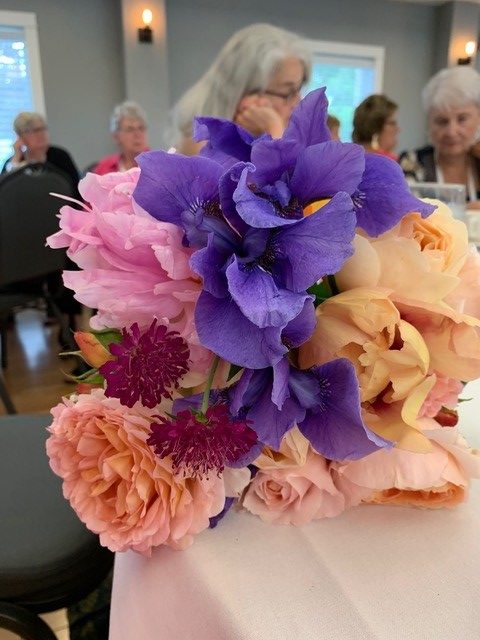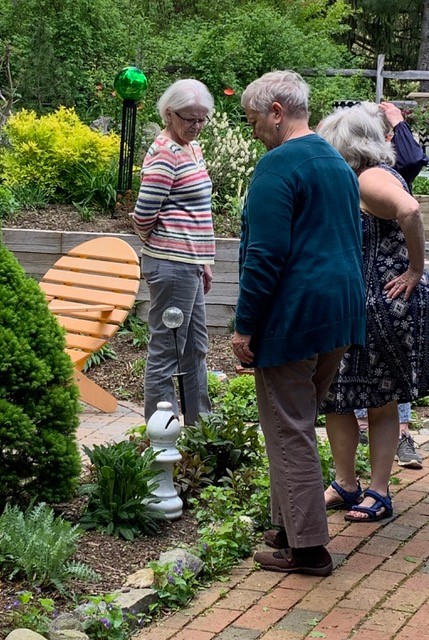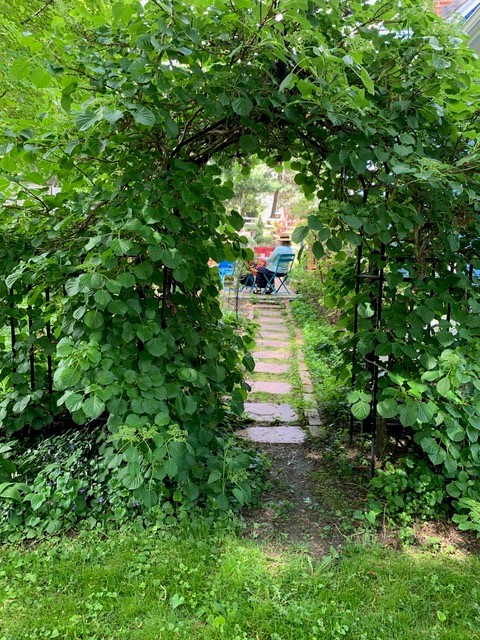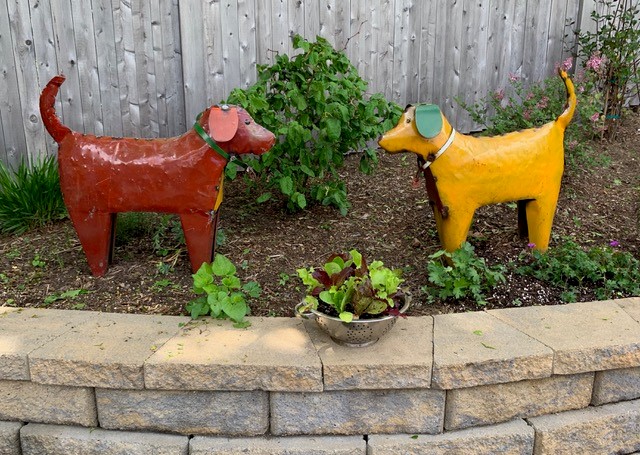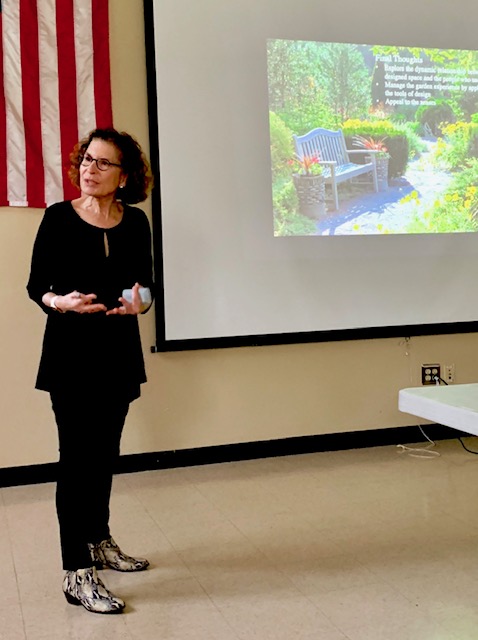It’s been several months since I’ve sent out a Happenings update. Other than cancellations and postponements, there hasn’t been much “happening” to report. Thanks to Ann H. and her EAGC Connections, however, we’ve been able to stay in touch virtually and enjoy the beauty of each other’s gardens. What an inspiration Ann’s emails have been! The photos are proof positive of what a superlative group of gardeners we are!
Interspersed throughout this Happenings you’ll find club photos from Septembers past. Test your memory. Do you remember these people and events?
Although it was technically an August Happening, the Promise Tree Garden Party & Social offered a great photo op for this month’s update. Lee had a perfect day for hosting members and did an outstanding job of potting up plants and marking her beds for plant digging. It wasn’t all work though – members had a long-awaited chance to chat and catch up, socially distanced in Lee’s welcoming gardens. Thanks to Johann and Edie for arranging this fun kick-off to our Promise Tree year. And thanks, especially, to Lee for her hospitality and preparation.
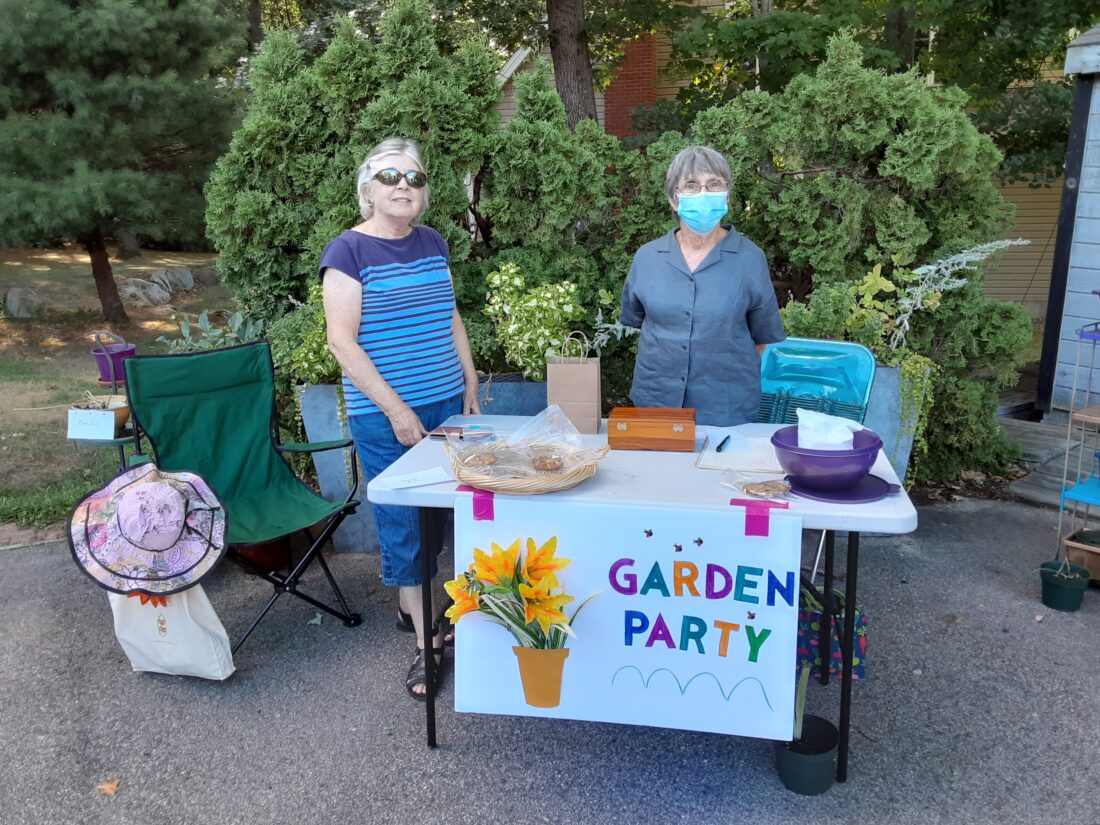

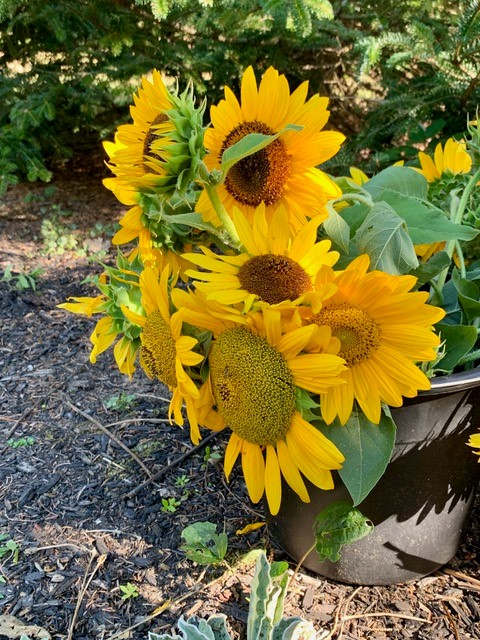


And speaking of the Promise Tree — please consider what you can offer to the Tree this fall. Unfortunately, fundraisers our club had planned for last fall and the upcoming year are impossible to implement right now. So our Promise Tree has become more important than ever for financial reasons. But more importantly, we’ve been isolated from each other for months and small Promise Tree events and offerings will help bring us back together. If you’re looking for ideas for your own leaf on the Tree, check the Promise Tree page of the website here for suggestions.
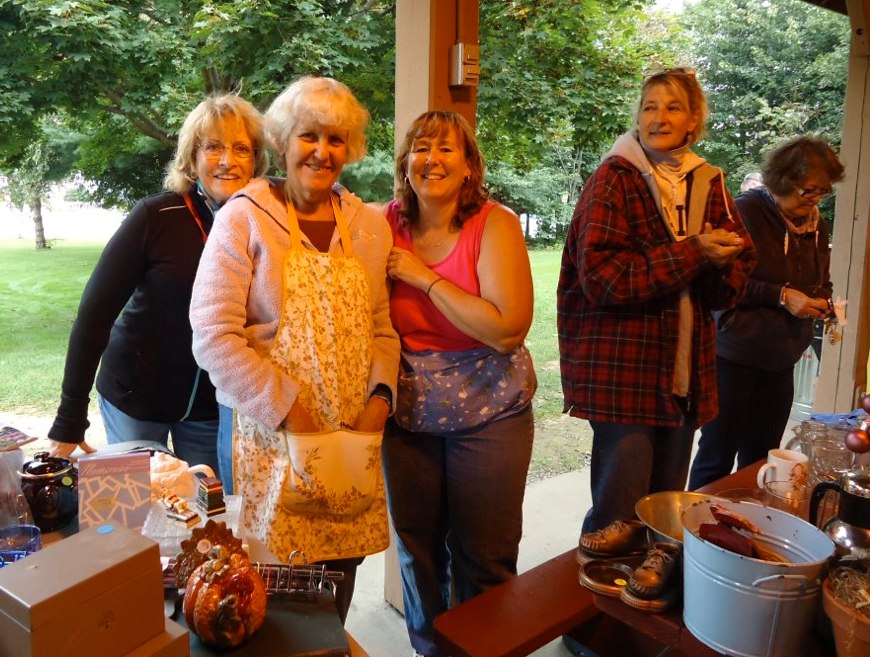
Announcements
Our first General Meeting of the 2020-2021 year will be held as originally planned on Thursday, Sept. 17 at 9:30. But the venue has changed – we’ll be meeting at the Stratham Hill Park Pavillion. As always, members are welcome at 9 a.m. and refreshments will be served. Please bring your own hot beverage. At this meeting we’ll be installing our officers for the year, since we were unable to do that at the June Luncheon. We’ll also be breaking into committees to discuss our plans for the coming year. Don’t miss it!
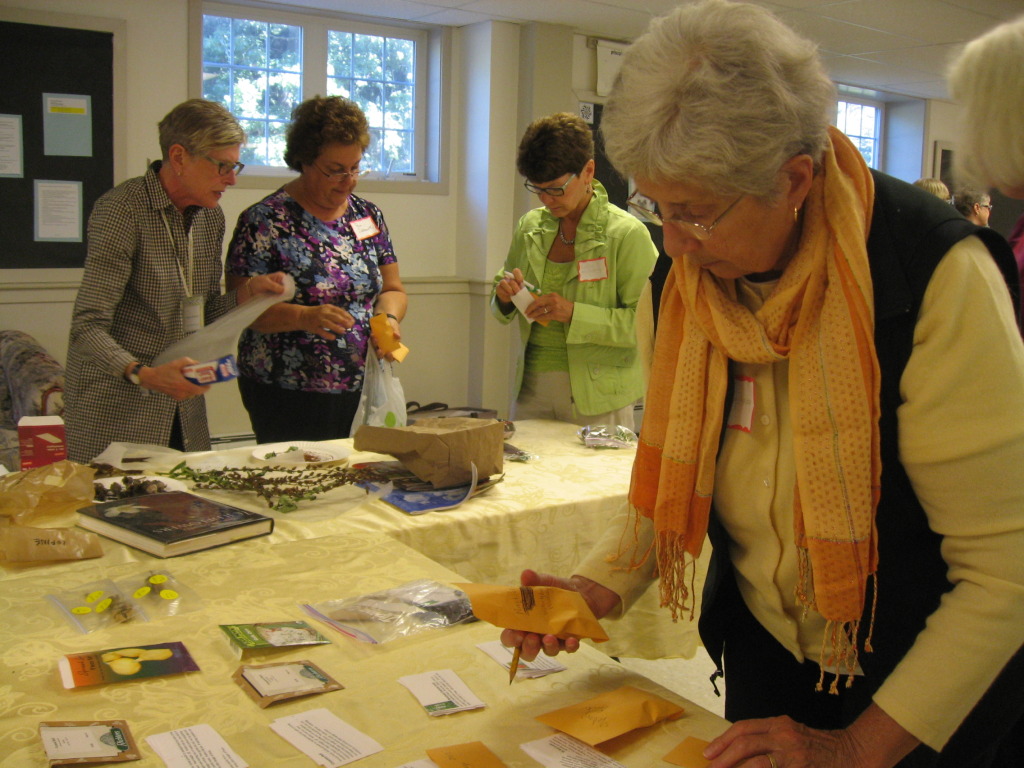
Last May, EAGC awarded its $1000 Scholarship to Nicole Berry of Newmarket. She graduated from the Seacoast School of Technology Animal and Plant Science Program in May. In addition to being involved in many school and community activities, including being on the leadership team for the National Future Farmers of America (FFA), Nicole also worked part time.
She considers herself a lifelong learner who always strives to do her best. According to her scholarship application letter, she states, “her career goal is to achieve a job as an entry level environmental scientist, in the field that deals with sustainable agriculture. I want to make the world a more productive place for nature, the current population and future generations”. This fall, Nicole is attending the University of Massachusetts Amherst, where she will study environmental science.
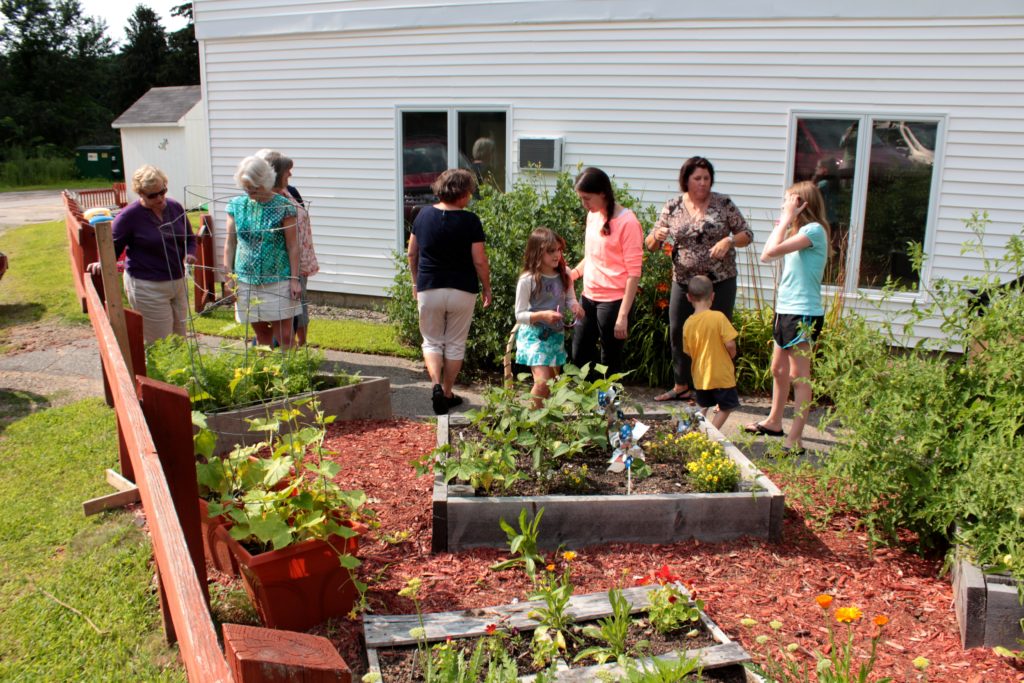
Our Awards Committee has decided to postpone the process of choosing and awarding the Outstanding Garden Awards until a later time. The presentation of these awards at our October meeting is always highly anticipated, but committee members realized during the summer that coronavirus restrictions made viewing of gardens and the presentation ceremony impossible. This gives members more time to be on the lookout for especially beautiful gardens – and to pass the addresses on to Awards Committee members for the next awards.
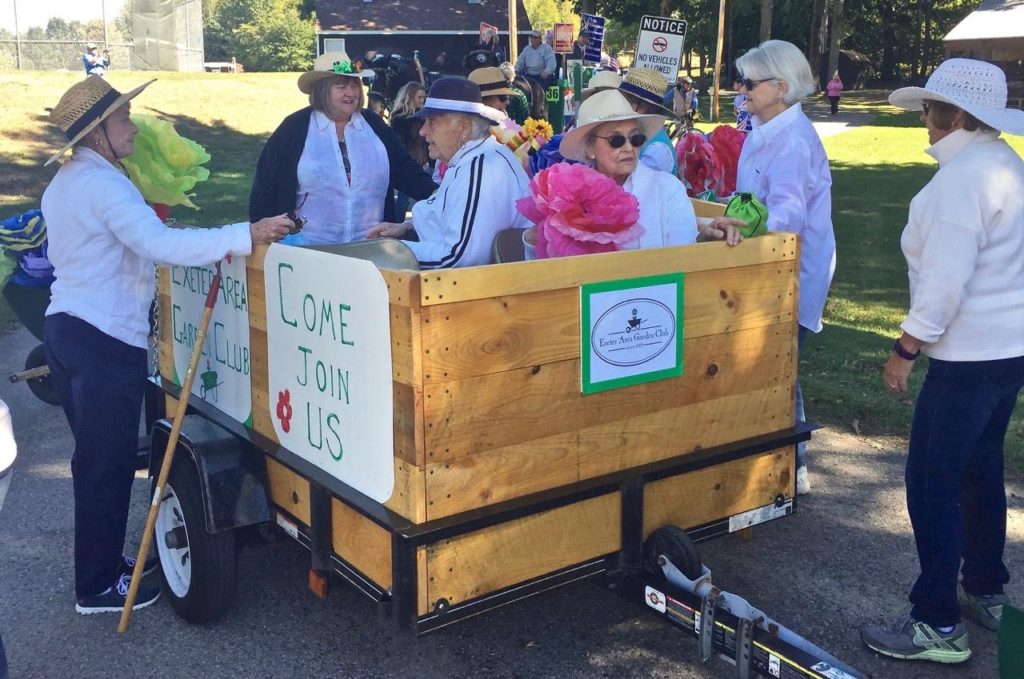
Our new vice president, Pat. N is taking inventory of all things EAGC. If you have any club supplies, notecards, equipment, etc. would you please let Pat know so she can finalize her list?
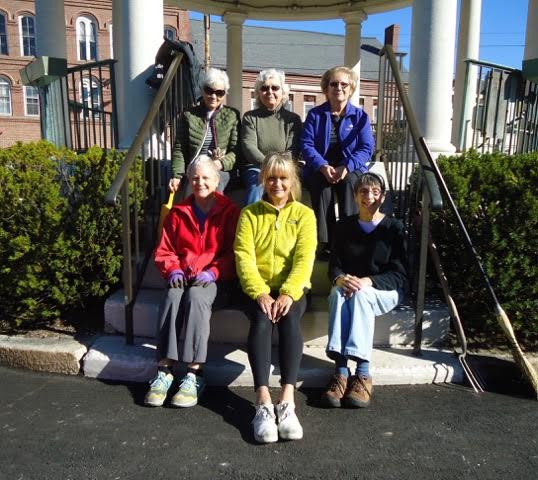
Some members may not be aware that EAGC has an excellent Facebook page, maintained by the very knowledgeble Patti E. In addition to making EAGC’s presence known to the Facebook world, Patti posts links to some fascinating gardening articles and adds interesting garden tidbits. If you’re not a Facebook user, click here for an example of what you can find on EAGC’s Facebook page. Then click “Like” and follow the page on a regular basis. If anyone would like a little help navigating Facebook, contact Patti. She’ll gladly give some guidance.
